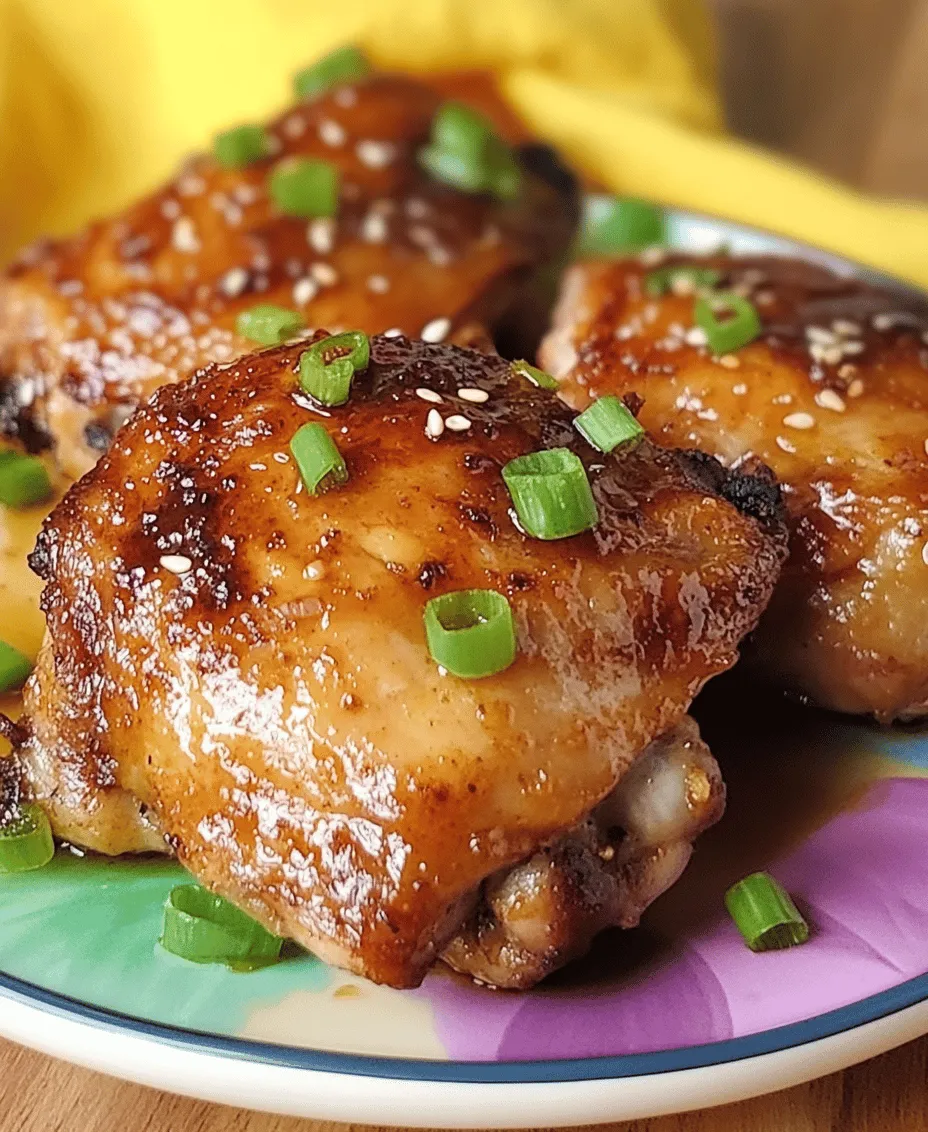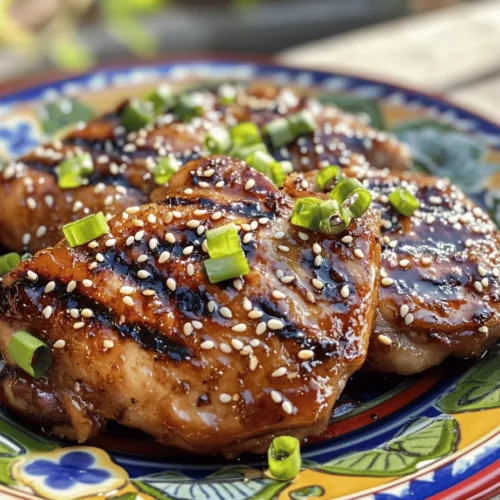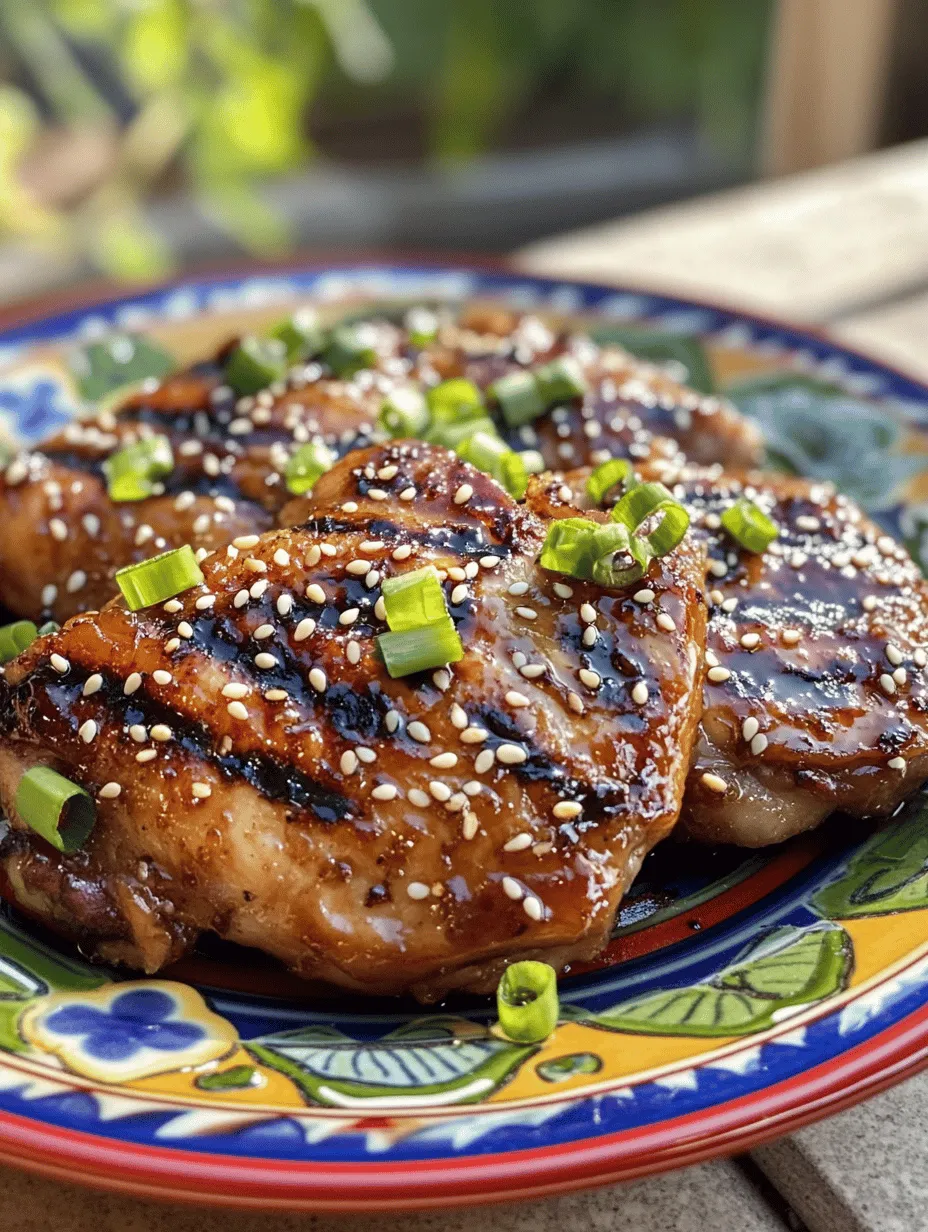Introduction
Hawaiian cuisine is a vibrant tapestry of flavors influenced by the diverse cultures that have settled on the islands over centuries. This culinary fusion features fresh seafood, tropical fruits, and hearty meats, all prepared with unique techniques and seasonings that reflect the spirit of the Aloha State. One dish that stands out in Hawaiian households, cherished for its simplicity and depth of flavor, is Hawaiian Shoyu Chicken. This dish embodies the essence of Hawaiian comfort food, combining savory, sweet, and umami elements to create a delightful experience for the palate.
Hawaiian Shoyu Chicken is more than just a meal; it is a celebration of the island’s agricultural bounty and cultural traditions. Shoyu, the Japanese word for soy sauce, is a key ingredient in this dish, highlighting the influence of Japanese cuisine on Hawaiian food culture. The preparation of Shoyu Chicken typically involves marinating chicken, infusing it with a rich blend of flavors that reflect the spirit of the islands. The importance of using quality ingredients cannot be overstated, as they contribute not only to the taste but also to the authenticity of this beloved dish.
In this article, we will delve into the intricacies of making Hawaiian Shoyu Chicken, exploring the essential ingredients, the art of marinating, and the steps required to achieve the perfect bake. With the right approach, you can bring a taste of Hawaii to your kitchen and enjoy a meal that is both comforting and delicious.
Understanding the Ingredients
To successfully create Hawaiian Shoyu Chicken, it’s crucial to understand the role of each ingredient in the recipe. Each component contributes to the dish’s unique flavor profile, creating a harmonious blend that is both satisfying and memorable.
Chicken Thighs
The choice of chicken thighs is paramount in this recipe. Opting for bone-in, skin-on thighs ensures optimal flavor and moisture during cooking. The bones and skin help to keep the meat juicy, while also providing a deeper taste. Unlike chicken breasts, which can dry out easily, thighs remain tender and flavorful, making them the ideal choice for this dish.
Soy Sauce
Soy sauce is the star of the show in Hawaiian Shoyu Chicken. It provides a rich umami flavor and a savory depth that is essential to the dish. For this recipe, it’s advisable to use low-sodium soy sauce. This allows the other flavors—particularly the sweetness from the brown sugar and honey—to shine through without being overpowered. Additionally, using low-sodium soy sauce gives you more control over the saltiness of the dish, ensuring a balanced flavor.
Brown Sugar and Honey
The combination of brown sugar and honey adds a delightful sweetness that perfectly complements the savory notes of the soy sauce. Brown sugar, with its molasses content, brings a rich depth of flavor, while honey adds a floral sweetness that enhances the overall taste. Together, they help to create a beautifully glazed finish on the chicken as it bakes, resulting in a mouthwatering caramelization that is hard to resist.
Rice Vinegar
Rice vinegar plays a crucial role in balancing the sweetness of the marinade with a touch of acidity. This acidity helps to brighten the dish, cutting through the richness of the chicken and the sweetness of the sugar and honey. The subtle tang of rice vinegar enhances the overall flavor profile, making each bite a delightful experience.
Garlic and Ginger
Garlic and ginger are aromatic powerhouses that elevate the flavor profile of Hawaiian Shoyu Chicken. Garlic adds a savory, pungent note, while ginger introduces warmth and a hint of spice. Together, they create a fragrant base that enhances the marinated chicken, infusing it with layers of flavor that deepen during the cooking process.
Green Onions and Sesame Seeds
Green onions and sesame seeds are used as garnishes in this dish, adding both visual appeal and flavor enhancement. Green onions provide a fresh, crisp contrast to the cooked chicken, while sesame seeds add a nutty crunch. These finishing touches not only beautify the dish but also elevate the overall dining experience.
Optional Ingredients
For those who enjoy a bit of heat, red pepper flakes can be added to the marinade. This optional ingredient introduces a spicy kick that complements the sweetness and savory elements of the dish. Adjust the amount based on your heat preference, making it easy to customize the dish to your liking.
Marinating the Chicken
Marinating is a crucial step in preparing Hawaiian Shoyu Chicken, as it allows the flavors to penetrate the meat, resulting in a more flavorful and tender dish. The marinade not only infuses the chicken with delicious tastes but also helps to tenderize the meat, ensuring a juicy final product.
How to Properly Marinate Chicken
1. Whisking the Marinade: Start by whisking together all of the marinade ingredients in a bowl until well combined. This includes the soy sauce, brown sugar, honey, rice vinegar, minced garlic, and grated ginger. Ensure that the sugar is fully dissolved to create a smooth marinade that will evenly coat the chicken.
2. Preparing the Chicken: Place the chicken thighs in a large resealable plastic bag or a shallow dish. Pour the marinade over the chicken, ensuring each piece is well coated. If using a bag, squeeze out as much air as possible before sealing. This helps the marinade to better adhere to the chicken.
3. Reserving Marinade: It’s important to reserve a portion of the marinade for later use. This reserved marinade can be brushed onto the chicken during the cooking process, enhancing the flavor and promoting a beautiful glaze.
4. Marinating Time: For optimal results, allow the chicken to marinate for at least one hour, but for the best flavor, consider marinating overnight. The longer the chicken sits in the marinade, the more pronounced the flavors will be. However, if you’re short on time, even a quick marination can still yield delicious results.
Cooking the Chicken
Once the chicken has marinated, it’s time to bring everything together and cook the Hawaiian Shoyu Chicken to perfection. Proper cooking techniques ensure that the chicken is tender, juicy, and infused with the wonderful flavors of the marinade.
Preheating the Oven
Before you start cooking, preheat your oven to 375°F (190°C). This temperature is ideal for baking chicken, allowing it to cook evenly while developing a golden-brown exterior. Preheating is essential, as it ensures that the chicken starts cooking at the right temperature, which helps to lock in moisture and flavor.
Preparing the Baking Dish
While the oven is preheating, prepare your baking dish. Use a large enough dish to accommodate all the chicken thighs without overcrowding. This allows for even cooking and ensures that the chicken gets nicely browned. If desired, you can line the baking dish with aluminum foil for easier cleanup, but this is optional.
Step-by-Step Instructions for Placing Chicken in the Oven
1. Arrange the Chicken: Remove the chicken from the marinade, allowing any excess liquid to drip off. Place the chicken thighs skin-side up in the prepared baking dish. Make sure they are spaced apart to ensure proper airflow during cooking.
2. Brush with Reserved Marinade: Using a brush, apply some of the reserved marinade over the chicken thighs. This will enhance the flavor and help to create a glossy finish as the chicken cooks.
3. Bake the Chicken: Place the baking dish in the preheated oven and bake for about 35-45 minutes, or until the chicken is cooked through and reaches an internal temperature of 165°F (74°C). Halfway through the cooking time, you can baste the chicken with additional reserved marinade for extra flavor.
4. Broil for Extra Crispiness (Optional): If you prefer a crispy skin, you can finish the chicken under the broiler for a few minutes after baking. Keep a close eye on it to prevent burning, and remove it once the skin is golden and crispy.
As the chicken bakes, your kitchen will fill with the mouthwatering aroma of soy sauce, ginger, and garlic, creating an inviting atmosphere that anticipates the delicious meal to come. The combination of flavors and textures in Hawaiian Shoyu Chicken makes it a dish that is not only satisfying but also a true representation of Hawaii’s rich culinary heritage.
In the next part of this article, we will explore serving suggestions and tips for the best results, ensuring that your Hawaiian Shoyu Chicken is a hit at your next gathering or family dinner.

Importance of Skin-Side Up for Crispiness
When preparing Hawaiian Shoyu Chicken, one of the critical steps to achieving that desired crispiness lies in the positioning of the chicken during cooking. Always place the chicken skin-side up in your baking dish or on the grill. This technique allows the skin to crisp up beautifully while the fat renders out, creating a delightful texture that contrasts the tender meat beneath. The heat from the oven or grill circulates around the chicken, ensuring even cooking and a perfectly golden-brown finish. The crispy skin not only enhances the visual appeal of your dish but also contributes a satisfying crunch that elevates the overall eating experience.
The Process of Basting and How It Affects Moisture and Flavor
Basting is another essential technique when making Hawaiian Shoyu Chicken. As the chicken cooks, periodically spoon some of the drippings or sauce from the baking dish back over the meat. This process helps to keep the chicken moist while infusing it with additional flavor. The sugars in the marinade caramelize as they cook, forming a rich glaze that clings to the chicken. Aim to baste the chicken every 15-20 minutes for optimal results, ensuring that every part of the chicken benefits from the flavorful marinade. This practice also helps to develop a beautiful, glossy finish that is visually appealing and delicious.
Creating the Perfect Glaze
The glaze is a hallmark of Hawaiian Shoyu Chicken, providing that signature sweet and savory flavor profile. To achieve a perfect glaze, understanding the caramelization process is crucial. As the sugar in the shoyu (soy sauce) and other ingredients heats up, it starts to caramelize, giving the dish a wonderful depth of flavor.
To thicken the sauce, consider simmering it for a longer period. As it reduces, the flavors concentrate, resulting in a more robust and sticky glaze that clings to your chicken. To know when the glaze is ready for drizzling, keep an eye on its consistency. It should be thick enough to coat the back of a spoon but still pourable. This ensures that when you drizzle it over your chicken, it enhances the dish without running off too quickly.
Serving Suggestions
Presentation plays a vital role in making your Hawaiian Shoyu Chicken an inviting centerpiece for any meal. To enhance the visual appeal, serve the chicken on a large platter, drizzling the glaze generously over the top. Surround the chicken with vibrant side dishes that complement its flavors, such as colorful sautéed vegetables or a refreshing salad.
When it comes to rice options, you have several choices that pair beautifully with Hawaiian Shoyu Chicken. Classic white rice is a staple that provides a neutral base, allowing the rich flavors of the chicken to shine. For a nuttier flavor and added nutrients, consider brown rice. If you’re looking to embrace the tropical essence of the dish, coconut rice is an excellent choice, providing a hint of sweetness that complements the savory glaze.
In addition to rice, consider adding vegetables for a balanced meal. Steamed or stir-fried bok choy, green beans, or a medley of bell peppers not only offer a colorful contrast but also provide essential nutrients. For an added touch, garnish your dish with freshly chopped green onions and sesame seeds. This not only adds a pop of color but also introduces a delightful crunch and additional layers of flavor.
Nutritional Insights
Hawaiian Shoyu Chicken is not only delicious but also provides several nutritional benefits. The primary ingredients, including chicken, soy sauce, and various seasonings, contribute to a balanced meal. Chicken is an excellent source of lean protein, essential for building and repairing tissues and supporting overall health. The soy sauce used in the marinade provides umami flavor and essential amino acids, while the addition of garlic and ginger offers anti-inflammatory properties.
In terms of macronutrients, this dish delivers a good balance of protein, carbohydrates, and healthy fats. To create a healthier version of Hawaiian Shoyu Chicken without sacrificing taste, consider using skinless chicken thighs or breasts, which reduce the fat content while still maintaining moisture and flavor. Additionally, you can substitute traditional soy sauce with a low-sodium version to decrease the overall sodium intake.
Cultural Context and Variations
Hawaiian Shoyu Chicken has deep roots in Hawaiian culture, influenced by the islands’ diverse culinary heritage. This dish is a staple at family gatherings and celebrations, often reflecting the unique flavors brought by various immigrant communities. The combination of sweet and savory elements in the marinade showcases the islands’ love for bold flavors and fresh ingredients.
In different Hawaiian households, variations of Shoyu Chicken abound. Some families might add pineapple juice or chunks to the marinade for an extra layer of sweetness and tropical flair. Others might opt for a smokier flavor by cooking the chicken on a barbecue grill or adding liquid smoke to the marinade. Additionally, for those with dietary restrictions, adaptations can be made to ensure everyone can enjoy this dish. Gluten-free soy sauce is an easy substitute for those avoiding gluten, and using a sugar alternative can help reduce carbohydrates for those watching their sugar intake.
Conclusion
In summary, Hawaiian Shoyu Chicken is a delightful dish that encapsulates the essence of Hawaiian cuisine with its simple yet flavorful preparation. The combination of crispy skin, a rich glaze, and complementary side dishes makes it a perfect choice for any gathering or family dinner. By following the outlined techniques and incorporating your own personal touches, you can create a meal that transports you to the sunny shores of Hawaii, even if you’re cooking in your home kitchen.
We encourage you to try making Hawaiian Shoyu Chicken at home for a taste of the islands. The joy of sharing homemade meals with family and friends is a tradition that transcends borders, allowing you to explore new flavors and cultures through cooking. So gather your ingredients, follow the steps, and enjoy this delicious dish that is sure to become a favorite in your household.



